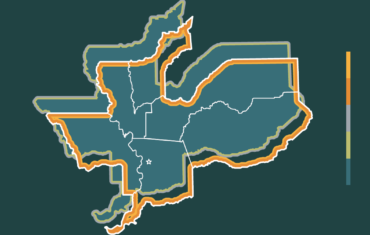Workers with Disabilities, Untapped Potential

The month of October is designated Disability Employment Awareness Month to recognize the contributions of individuals with disabilities to our workforce and economy. Originally established in 1945, the first week of October was designated as National Employ the Physically Handicapped Week. In 1962, the word “physically” was removed and 25 years later the week was expanded to one month and renamed National Disability Employment Awareness Month. This year’s theme is appropriately named “America’s Recovery: Powered by Inclusion.”
A significant milestone in the fight for disability employment rights occurred on September 27th of this year when Governor Newsom signed Senate Bill 639 into law. This bill prohibits employers from paying employees with disabilities below minimum wage. It also creates a path that transitions workers with disabilities from working in a segregated setting with solely people with disabilities to fully integrated settings. With the signing of this bill, California becomes the seventh state in the nation to outlaw paying workers with disabilities a subminimum wage. The bill sets forth the conditions for a phase-out strategy by January 1, 2025, and requires the involvement and input from people with disabilities.
How Did We Get Here?
In 1939, when President Roosevelt signed the Fair Labor Standards Act (FLSA) into law, there was a fear people with disabilities, particularly returning World War I veterans, would have a disadvantage and experience high rates of unemployment if employers had to pay comparable wages. Therefore, a provision was created to allow workers with disabilities to receive lower wages. Despite the allowance of subminimum wage categories, unemployment rates for people with disabilities have consistently remained disproportionately high compared to the general public. The employment to population ratio for people with disabilities in December 2019 was 30.6, compared to 74.8 for non-disabled people. Additionally, the use of subminimum wage categories has had the unfortunate effect of limiting the potential and advancement of workers with disabilities and resulted in unfair pay compared with their non-disabled peers as reported by the U.S. Department of Labor. Working adults with disabilities are two times more likely to be living in poverty than their non-disabled peers.
WIOA Propelled the Cause
When the Workforce Investment Act was amended in 2016 to the Workforce Innovation and Opportunity Act (WIOA), one of the many provisions was the creation of an Advisory Committee on increasing Competitive Integrated Employment (at least minimum wage and integrated setting) for individuals with disabilities. The work of the Committee was intended to address the pervasive unemployment and low workforce participation among individuals with significant disabilities in the United States. Another backdrop to the Committee’s work was the evolving federal disability employment policy which presumes that all individuals with disabilities are employable when opportunity and support are available.
The Time Has Come
With the signing of Senate Bill 639, Competitive Integrated Employment has the capacity to be a pathway out of poverty for thousands of individuals in our community. By and large, people with disabilities want to work. Changes in work structure, including remote work, have the ability to allow additional opportunities for individuals with disabilities to participate more fully in our economy. Often, accommodations can be the barrier to gainful employment. With the increased opportunity to work from home, many individuals have the opportunity to obtain and maintain employment in an environment equipped and conducive to their health. Many studies document employees with disabilities work harder, are more productive, more loyal, and show a lower absenteeism rate than their non-disabled peers. In the current environment of large-scale job openings and a shortage of workers, casting a wider net can yield immediate benefits.
To keep up with Valley Vision’s work to advance a future-ready workforce in the Sacramento region, subscribe to our 21st Century Workforce email newsletter!
Angelina Olweny is a Valley Vision Project Associate supporting initiatives within the 21st Century Workforce impact area.
Renee John is a Valley Vision Project Leader managing initiatives within the 21st Century Workforce impact area.




